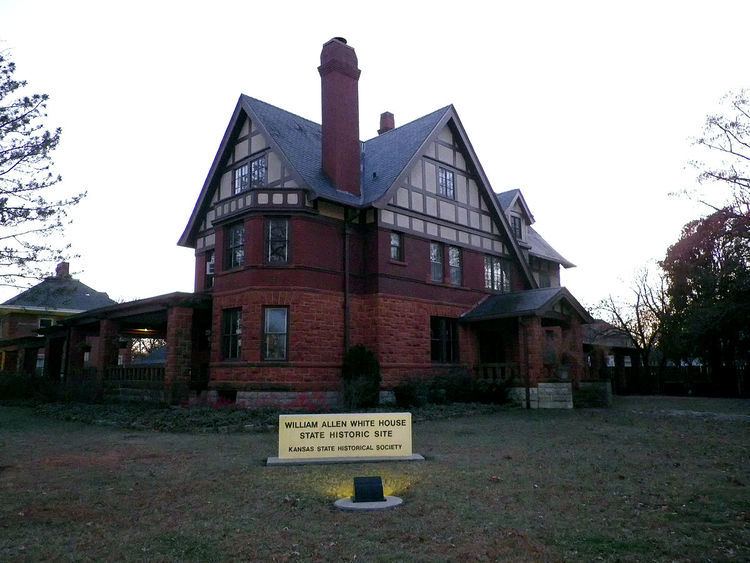Built 1899 NRHP Reference # 71000318 Opened 1899 Added to NRHP 14 May 1971 | Architect Almerin Gillette Designated NHL May 11, 1976 Phone +1 620-342-2800 | |
 | ||
Location 927 Exchange St., Emporia, Kansas 66801 Address 927 Exchange St, Emporia, KS 66801, USA Similar David Traylor Zoo of Emporia, Grinter Place, Peter Pan Park, Emporia Granada Theatre, Kansas Museum of History Profiles | ||
Short play festival at william allen white house 12 feb 2017 emporia ks
William Allen White House, also known as Red Rocks, was the home of Progressive journalist William Allen White from 1899 until his death in 1944. The house was declared a National Historic Landmark in 1976. It is operated by the Kansas Historical Society as Red Rocks State Historic Site.
Contents
History
This house at 927 Exchange was home to William Allen White, nationally and internationally known editor of the Emporia Gazette, from 1899 until his death in 1944. Here the White family entertained several U.S. presidents-- Theodore Roosevelt, William Howard Taft, Warren Harding, Calvin Coolidge, and Herbert Hoover—and prominent Americans, such as Edna Ferber, Frank Lloyd Wright, Walt Mason, and Jane Addams.
The home is made of bright sandstone from Colorado, which covers the first story. The top two stories of the house are red pressed brick, stucco, and wood strips. The red sandstone is believed to be from a quarry in Red Rock Canyon near the Garden of the Gods, Colorado Springs, Colorado. Almerin Gillett, lawyer and cattle entrepreneur began building the house around April 1888. Due to drought and a drop in the cattle market, Gillett was unable to complete the construction. His wife, Eugenia, died in 1892, and Gillett soon moved to Kansas City where he died in 1896.
In 1915 William Allen White wrote to architect Frank Lloyd Wright and suggested that he "do over" the house, which was "warted all over with bow windows, and towers and gables and fibroid tumors, acute angles, meaning nothing and merely serrating the sky line." Wright soon began to develop preliminary designs for the house. White and Wright continued their discussions of design until around November 1919, when White contacted the architectural firm of Wight & Wight in Kansas City.
The renovation began in March 1920 under close direction from William Allen and Sallie. The Wight design retained much from the Frank Lloyd Wright plans. The former Queen Anne was changed to a Tudor Revival. The house entrance was moved from Exchange Street to Tenth Avenue and features a one-story gabled porch. The house was enlarged from ten rooms to eleven with four full baths and two half baths. Dormers were added on the north and south sides of the third floor. Sleeping porches were enclosed, including in the area that became White's office. The terraced garden, pergola, and lily pool also were built during the renovation. White took particular interest in the living room fireplace. "I have here in Emporia a lot of very beautiful white foundation stone-Carthage stone-left over from the trim on my garage building... It might do well for a mantel, if white stone can be used." The renovations were due to be completed in late May or early June 1921. The family moved back home by fall.
William Allen and Sallie lived at the home until their deaths. William Allen died in 1944; Sallie in 1950. Their son and daughter-in-law, William Lindsay and Kathrine Klinkenberg White, moved into the house around 1955, although they also maintained a residence in New York City. The site was designated a National Historic Landmark in 1976. William Lindsay died in 1973 and Kathrine died in 1988. In 2001 Paul David and Barbara White Walker, their daughter, donated this site to the state of Kansas to be operated as Red Rocks State Historic Site.
